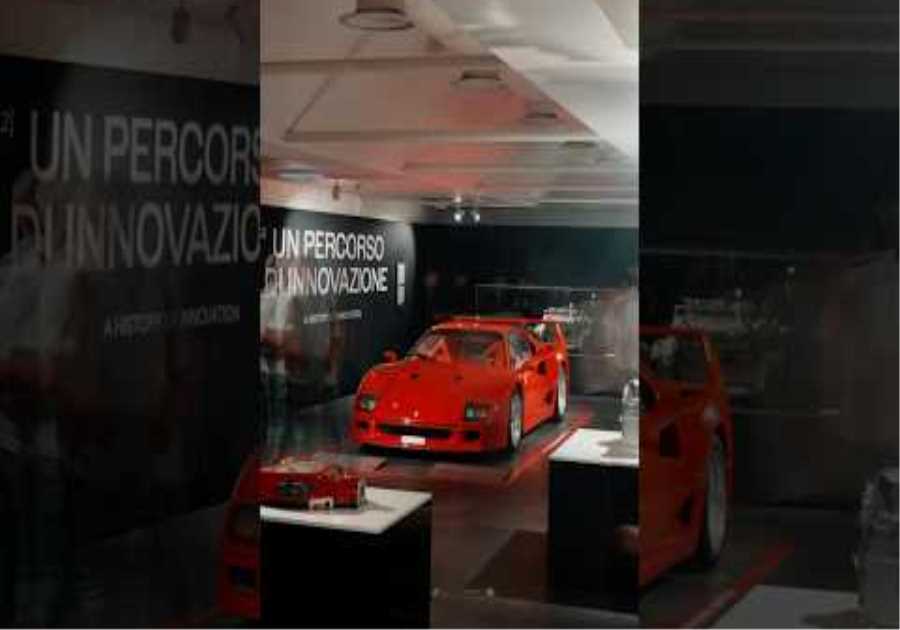
Let’s imagine for a moment a world in which Gordon Murray and McLaren continued to work with BMW long after the legendary McLaren F1. A world in which BMW and Murray were still partnered today. It seems like a good world, doesn’t it? Unfortunately, that was never the case and that ideal world doesn’t exist. What’s most frustrating about that, though, is that it did almost exist. In fact, it almost existed right after the F1 was made.
Following the smashing success of the F1, McLaren Cars—the separate entity from the Formula 1 team—and Gordon Murray himself wanted to work with BMW again. Murray owned 20-percent of McLaren cars at the time and he wanted to work with his pal, legendary BMW engine designer Paul Rosche, once again. Rosche designed the Murray’s McLaren F1 engine, which will probably continue to be the greatest road-going engine ever made until Murray’s new Cosworth-powered T.50 debuts.
McLaren F1 – Photos by McLaren Media
In fact, McLaren, Murray, and BMW had two more cars planned, with Murray-designed chassis and bodies and BMW engines. Those two cars were set to be smaller, simpler, much less expensive sports cars with more sensitive power figures and affordable-ish price tags than the McLaren F1. However, they were both canceled after McLaren’s Formula 1 team partnered with Mercedes-Benz for its engines. BMW and Mercedes have a bitter rivalry and as soon as BMW found out about the engine deal, it pulled the plug on both sports cars. Apparently, Murray was quite unhappy with McLaren for that.
Murray then looked at Mercedes engines for the two sports cars but both were too big and heavy, nor did they meet his requirements for power and displacement. So the plans for both cars were scrapped, never to see the light of day. Murray then went on to make the Mercedes-McLaren SLR, a car he was impressed with from a technical standpoint but one he didn’t really love. It was too heavy, too soft, and the antithesis of what he wanted to build.
But what if things had been different? What if McLaren never partnered with Mercedes for F1 engines and Murray and BMW were able to build the sports cars they both wanted to? For one thing, there’d be two incredible sports cars for enthusiasts to enjoy. But, for another, BMW might be a very different company today.

Think of the sorts of cars BMW currently makes. Most of them are bloated, heavy, tech-focused SUVs. They’re far cries from the BMWs that are so revered and the exact opposite of the cars Murray typically builds. But if the M Division had more influence from Gordon Murray over the years, its course may have been changed. BMW M may have focused more on lighter weight materials and simpler handling. And that’s only if BMW and Murray stopped at those two cars. If both cars were successes, why would they stop there? Perhaps the two would still be partnered today. What a world that would be.
Here’s another interesting thought exercise—what if the two brands work together again? Murray no longer needs BMW’s help, as Cosworth is making his engines and, frankly, it does a better job than BMW can. However, BMW needs Murray’s help. The roles could be reversed. Instead of Murray needing a BMW powertrain for his brilliant chassis, BMW needs a brilliant chassis for its powertrain.
BMW’s “eDrive” electric powertrain units are excellent but they lack efficiency. One of the biggest reasons for that is weight. BMW’s current crop of electric cars are so heavy I question if they’re actually made from lead. Murray’s company can help there, as it’s developed a new method of developing lightweight chassis, called iStream and it’s quite revolutionary. It uses F1-grade technologies to develop chassis in a groundbreaking way, making them lighter, stiffer, and more cost effective than anything like it.

What if, for BMW’s upcoming EVs (or maybe even just a few bespoke EV M cars), BMW used Murray’s iStream tech to bring the band back together and develop some killer sports cars? I’m drooling at the mere idea.
Obviously, such a thing will never happen because BMW won’t try anything new unless focus groups prove that it will make a bajillion, gajillion dollars. However, it’s still technically possible and would make the world a better place.
Did you miss our previous article...
https://formulaone.news/mclaren/szafnauer-hoped-piastri-had-a-bit-more-integrity-as-contract-dispute-nears-conclusion






